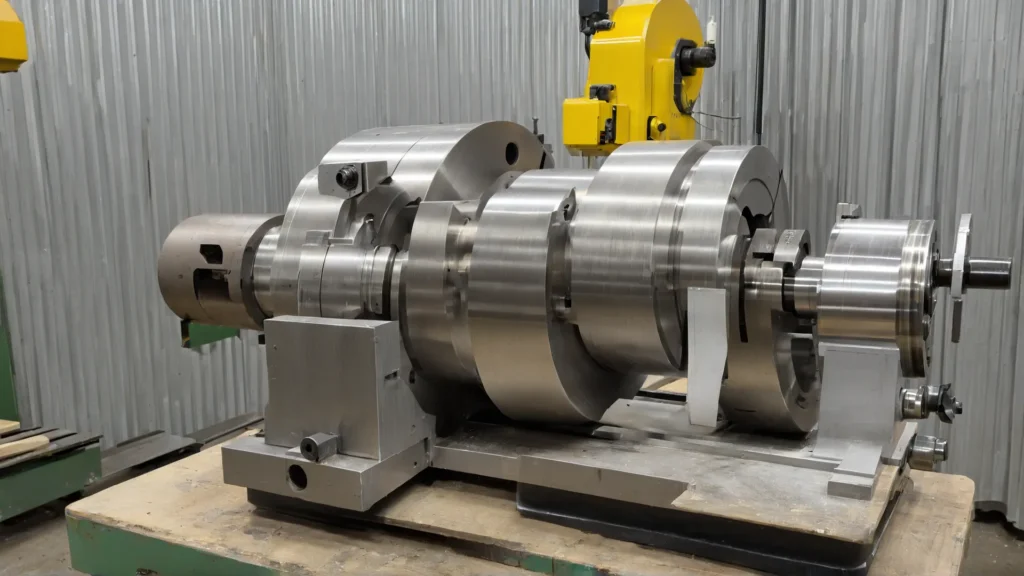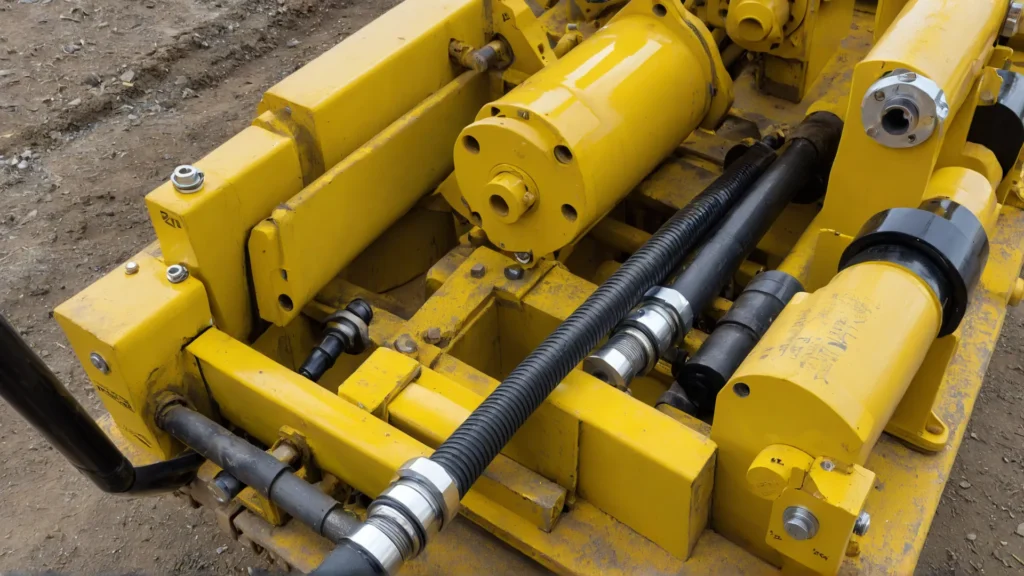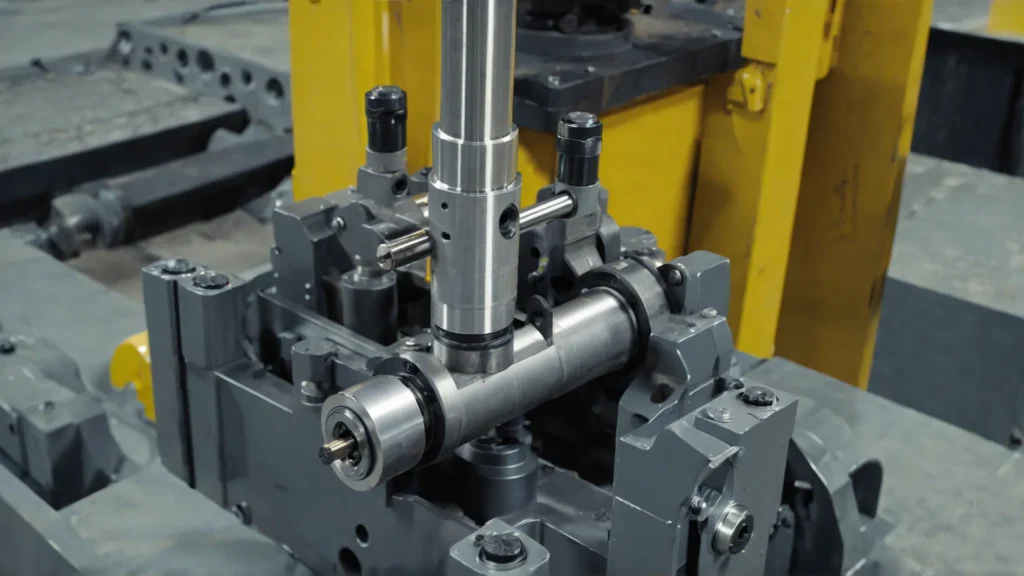What Are Hydraulic Cylinders
Hydraulic cylinders are powerful devices that convert fluid pressure into linear force and motion.
They are essential components in various machinery, from construction equipment to manufacturing systems.
In this blog post, we’ll dive into the world of hydraulic cylinders, exploring their working principles, applications, and key advantages, empowering you to harness their potential effectively.

What Are Hydraulic Cylinders
Hydraulic cylinders are mechanical devices that use pressurized fluid to generate linear force and motion. They consist of a cylinder barrel, piston, and piston rod. Hydraulic cylinders are used in a wide range of applications, including construction equipment, manufacturing machinery, and automotive systems. They are known for their high force capabilities and precise control.
How Hydraulic Cylinders Work
When hydraulic fluid is pumped into the cylinder barrel, it pushes against the piston, causing it to move.
The piston is attached to the piston rod, which extends out of the cylinder barrel. As the piston moves, it pushes or pulls the piston rod, which is connected to an external mechanism. This converts the hydraulic pressure into linear force and motion to actuate the mechanism.
The force exerted by the piston depends on the hydraulic pressure and piston surface area. Higher pressure or larger piston area produces greater force. The speed of the piston depends on the fluid flow rate into the cylinder.
Hydraulic Force
Hydraulic force is the force that is transmitted through a confined liquid at a given pressure. It is calculated by multiplying the pressure by the area of the. This force is used to move the cylinder in a linear direction, either pushing or pulling a load. The hydraulic force is directly proportional to the pressure and the size of the cylinder.
To calculate hydraulic force, use the formula:
Force = Pressure x Area
Where:
- Force is measured in pounds (lbs) or Newtons (N)
- Pressure is measured in pounds per square inch (psi) or megapascals (MPa)
- Area is measured in square inches (in²) or square meters (m²)

Components of Hydraulic Cylinders
A hydraulic cylinder consists of several key components that work together to enable the cylinder to extend and retract, generating tremendous pushing and pulling forces. Here are the main parts that make up a typical hydraulic cylinder:
Cylinder Barrel: The cylinder barrel is a seamless, honed steel tube that forms the main body of the hydraulic cylinder. It contains the cylinder’s internal components and must withstand high internal pressures without deforming. The barrel keeps the pressure zones separated and provides a smooth surface for the piston to slide along.
Piston: The piston is a short, disc-shaped component that fits tightly inside the cylinder barrel. It is typically made of steel or cast iron. The piston effectively separates the internal cylinder compartments and provides the surface area for the pressurized hydraulic fluid to act upon.
Piston Rod: The piston rod is a hard chrome-plated steel shaft that attaches to the piston. It extends through the cylinder head and connects to the machine component doing the work. The piston rod transmits the linear force generated by the piston to move the external object.
Cylinder Head: The cylinder head seals the end of the barrel where the piston rod extends through. It contains passages for the hydraulic fluid to enter and exit the cylinder. The head incorporates seals and bushings to prevent leakage and align the piston rod. Hydraulic connections are made via ports in the cylinder head.
Cylinder Cap: The cylinder cap seals the opposite end of the barrel from the head. It is typically welded or bolted in place after the piston is installed. The cap completes the internal fluid chamber and provides a mounting point for attaching the cylinder to a machine.
Seals: Various seals are used throughout a hydraulic cylinder to contain the high-pressure fluid and prevent contamination. This includes piston seals, rod seals, wiper seals, and static seals.
Ports: Ports are openings that allow hydraulic fluid to enter and exit the cylinder. There are ports on both sides of the piston to facilitate extension and retraction.
Hydraulic Fluid: Hydraulic fluid is a specially formulated liquid that transmits power throughout the hydraulic circuit, enabling the cylinder to perform its intended function.

Types of Hydraulic Cylinders
Telescopic Cylinders
Telescopic cylinders consist of multiple stages of cylinders nested inside each other, similar to a telescope. This design allows for a long stroke length in a compact retracted size. Telescopic cylinders are often used in applications with limited space, such as dump trucks, cranes, and lift gates.
Tie-Rod Cylinders
Tie-rod cylinders have threaded steel rods that hold the end caps to the cylinder barrel. This design allows for easy disassembly and maintenance. Tie-rod cylinders are commonly used in industrial applications, such as presses, injection molding machines, and other equipment requiring high force output.
Welded Cylinders
Welded cylinders have end caps that are welded directly to the cylinder barrel, creating a strong and leak-resistant design. These cylinders are more compact and can withstand higher pressures compared to tie-rod cylinders. Welded cylinders are often used in mobile equipment, such as excavators, bulldozers, and cranes, where space is limited and durability is crucial.
Plunger Cylinders
Plunger cylinders have a single-piece piston and rod assembly, which protrudes from one end of the cylinder barrel. This design eliminates the need for a sealing gland, making plunger cylinders suitable for high-pressure applications. However, the exposed rod is susceptible to damage and contamination.
Differential cylinder
A differential cylinder has a piston rod on only one side of the piston. This results in the cylinder having two different effective surface areas on either side of the piston – the area on the piston side which is fully effective, and the annular area on the rod side where only the ring-shaped area around the rod is pressurized. Differential cylinders are commonly used where high force is needed in one direction, such as lifting applications, but the return stroke can be faster with less force.

Single-acting vs Double-acting Hydraulic Cylinders
Single-acting Hydraulic Cylinders
A single-acting hydraulic cylinder has only one port for hydraulic fluid to enter and exit. When pressurized fluid is pumped into the cylinder, it pushes the piston in one direction, typically extending the piston rod. The return stroke, which retracts the piston rod, is achieved by an external force, such as gravity, a spring, or the weight of the load itself.
Advantages of single-acting cylinders include:
- Simpler design with fewer components, making them easier to maintain and less expensive
- Compact size, ideal for applications with limited space
- Well-suited for applications that require force in only one direction
Disadvantages of single-acting cylinders include:
- Reliance on external forces for retraction, which can be slower and less controlled
- Not suitable for applications requiring precise positioning or rapid cycling
Double-acting Hydraulic Cylinders
A double-acting hydraulic cylinder has two ports, allowing hydraulic fluid to enter and exit on both sides of the piston. This enables the cylinder to provide force in both directions, extending and retracting the piston rod.
Advantages of double-acting cylinders include:
- Precise control over the piston’s movement in both directions
- Faster cycling times and higher efficiency
- Ability to perform push and pull functions in a single cylinder
- Suitable for applications requiring repetitive, high-force movements
Disadvantages of double-acting cylinders include:
- More complex design with additional components, which can increase maintenance requirements and cost
- Larger size compared to single-acting cylinders, due to the need for two ports and additional internal components
Hydraulic vs Pneumatic Cylinders
Hydraulic and pneumatic cylinders are both types of linear actuators that convert fluid power into mechanical force, but they have some key differences in how they operate and what applications they are best suited for.
Hydraulic cylinders use a pressurized liquid, usually oil, to generate linear force and motion. Pneumatic cylinders use compressed air or gas to create motion.
Advantages of Hydraulic Cylinders
- Very high force output compared to size
- Capable of holding force and position constantly without the pump running
- Smooth, consistent, and controllable motion
- Durable and reliable for heavy duty applications
Advantages of Pneumatic Cylinders
- Cleaner operation without risk of messy fluid leaks
- Simpler and less expensive components
- Typically faster acting than hydraulics
- Suitable for environments where hydraulic oil is not allowed

How to Choose Hydraulic Cylinders
Selecting the right hydraulic cylinder for your application requires careful consideration of several key factors:
Cylinder Configuration
The first decision is whether you need a simple cylinder configuration with a single cylindrical housing, or a telescopic configuration that uses nested sleeves to extend the cylinder length. Telescopic cylinders are ideal when you need a long stroke in a space-constrained environment.
Cylinder Action
Hydraulic cylinders can be single-acting or double-acting. Single-acting cylinders apply force in one direction and require an external force or spring to retract. Double-acting cylinders apply force in both directions by alternating hydraulic pressure on each side of the piston.
Bore Size and Stroke Length
The bore size is the internal diameter of the cylinder barrel and determines the force output. Larger bores provide more force. The stroke length is the distance the piston travels. Make sure to select a cylinder with sufficient stroke for your application.
Mounting Style
Hydraulic cylinders come with various mounting options such as threaded, flanged, clevis, trunnion, or pivot mounts. Consider how the cylinder will attach to your machine structure when selecting the mounting style.
Pressure Rating
Check the maximum operating pressure of the cylinder and ensure it matches your hydraulic system. Common pressure ratings range from 1500 psi to 3000 psi.
Rod and Bore Materials
The piston rod and cylinder barrel materials impact strength, corrosion resistance, and weight. Common materials include carbon steel, stainless steel, and aluminum. Select materials suitable for your operating environment.
Seals and Cushions
The type of rod and piston seals impact friction, leakage, and temperature range. Consider options like wear bands, cushions, and scrapers for improved cylinder performance and longevity.
Speed and Control
The extension and retraction speeds are controlled by the hydraulic flow rate. Cushions and flow controls can be used to optimize cylinder speed and end-of-stroke deceleration.
FAQs
What is the most commonly used hydraulic cylinder
The most commonly used hydraulic cylinder is the tie-rod cylinder. Tie-rod cylinders are popular due to their versatility, durability, and ability to handle high-pressure applications in various industries, such as construction, manufacturing, and agriculture.
How do you tell if a cylinder is hydraulic or pneumatic
To determine if a cylinder is hydraulic or pneumatic, you can check the type of fluid it uses. Hydraulic cylinders use incompressible liquids like oil, while pneumatic cylinders operate using compressed gases such as air.
What materials are hydraulic cylinders made from
Hydraulic cylinders are typically made from steel or stainless steel. Components such as the barrel, piston, and piston rod are often made from high-strength steel, while seals within the cylinder can be made from polyurethane, rubber, or other materials designed to withstand high pressures.
How can hydraulic cylinder life be extended
Regular maintenance, such as checking for leaks, monitoring fluid quality, and replacing worn parts like seals, can extend the life of hydraulic cylinders. Ensuring that the hydraulic system is free from contamination and that the cylinders are not operating under excessive load will also help.
In conclusion
Hydraulic cylinders are essential components in various industries, powerful and precise linear motion.
Understanding their working principles,, and applications is crucial for selecting the right cylinder for your specific needs.
To learn more about hydraulic cylinders and how they can benefit your application, consult with a trusted hydraulic equipment supplier or engineer today.


